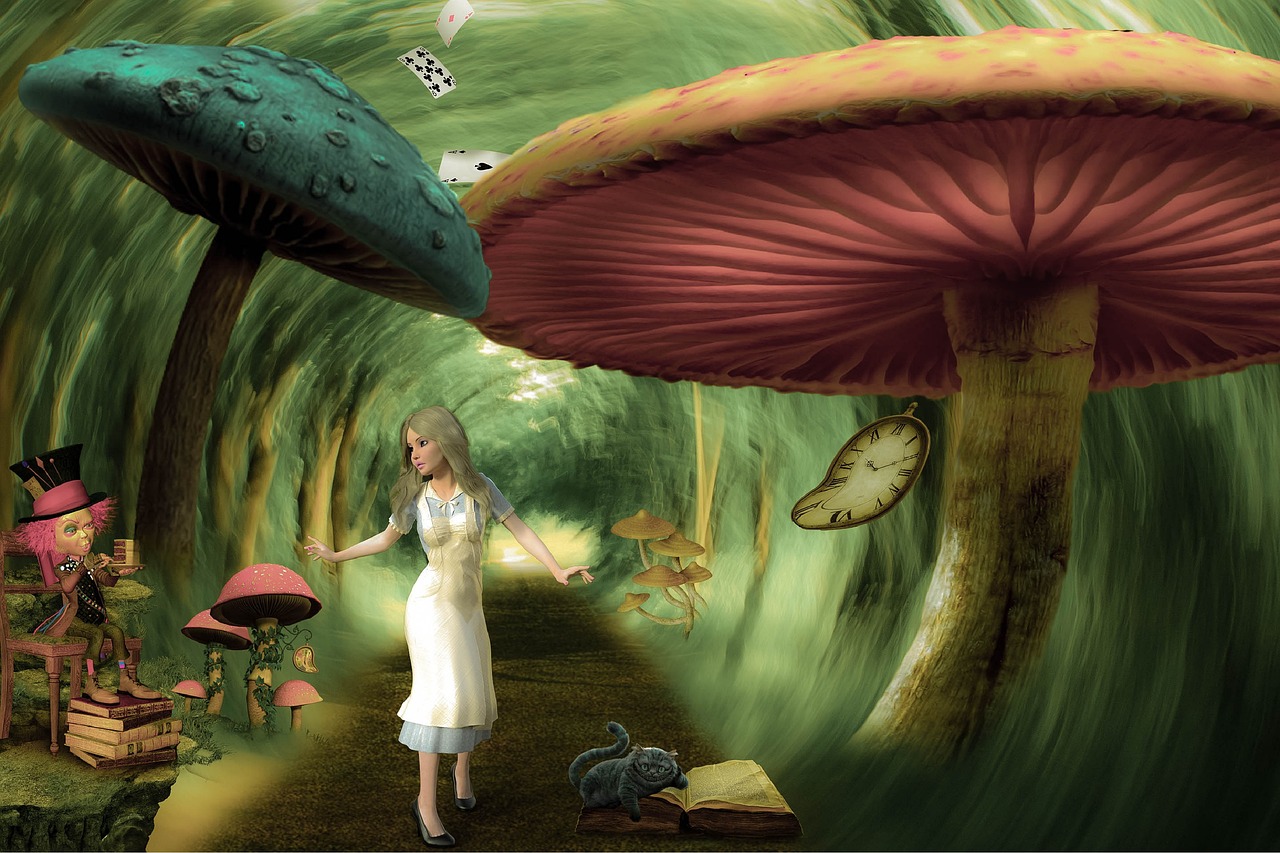Alice in Wonderland syndrome may sound like a made-up condition, but, even though it’s very rare, it is a real syndrome and it does affect certain individuals. The syndrome manifests through either (or both) self-perception and visual processing. This essentially means that the brains of those with the syndrome suffer disruptions that lead to an altered perception of themselves and the outside world. These perceptions are often of size and distance.
Alice in Wonderland syndrome (AIWS) is a rare neurological condition that temporarily disrupts the brain’s ability to process sensory input and affects how it perceives things. This includes distortion about the size of things, one’s own body, and other elements of reality. The condition was named by English psychiatrist John Todd in 1955, after Lewis Carroll’s 1865 book ‘Alice’s Adventures in Wonderland.’ This is because those who suffer from the condition experience similar situations to those experienced by the book’s main character, Alice. The syndrome can affect people of any age, but it’s more common in children and adolescents. People with certain brain-related conditions are also more likely to suffer from AIWS.
Alice in Wonderland syndrome is rare. The condition seems to be mostly temporary, which makes research more difficult to collect. Plus, there is no overall accepted criteria for AIWS, which can make diagnosis difficult. The way AIWS manifests can be divided into three categories. One is through disturbances in self-perception. This is when people have an incorrect perception of their own body, with regards to size and feel. This can affect the whole body, or just specific body parts. Another way AIWS manifests is through disturbances in visual processing. This is how people’s brains process the things they see. This is the most common way AIWS affects people.
A combination of both can also occur, in which case people will experience problems with self-perception and visual processing. Now, let’s take a look at the symptoms of both self-perception and visual perception. The main symptom is when a person experiences changes in the perception of their own body. For example, a part of the body can feel too big (partial macrosomatognosia) or too small (partial microsomatognosia).
The entire body may also feel too tall (total macrosomatognosia) or too short (total microsomatognosia). Derealization may also occur. This is a form of dissociation where people feel disconnected from the world around them. Depersonalization, another type of dissociation, can also be a symptom. This is when the person feels disconnected from their own body and mind, as if experiencing one’s own life in third person. Somatopsychic duality, or the feeling of having the body divided in two, can also occur.As can a disruption in the sense of time, where people report time either slowing down or speeding up. Visual perception symptoms are the most common ones in people with AIWS. One of the most recurrent is perceived changes in the size of objects. These may appear larger (macropsia) or smaller (micropsia) than they really are. Another common visual perception symptom is changes in distance. This is when objects appear to be closer (pelopsia) or farther away (teleopsia) than they are.
Changes in both size and distance can also occur. An example would be objects that seem smaller and appear to be moving farther away (porropsia). People may also appear smaller than they actually are. This is also known as lilliputian hallucination, a reference to the small residents of Lilliput in Jonathan Swift’s novel ‘Gulliver’s Travels.’ Another visual perception syndrome is changes in object appearance. This is when there are perceived distortions in objects and lines (which may seem wavy).
Causes
The root causes of Alice in Wonderland syndrome remain unknown, but one thing we know is that migraines are one of the most common triggers. This is especially true in the presence of a migraine aura. Other types of headaches may also trigger the syndrome.Viral infections, such as Epstein-Barr virus (EBV), type A or H1N1 influenza, varicella (chickenpox and shingles), typhoid fever, scarlet fever, and Lyme disease, are the most prominent causes of AIWS in children. People who suffer from conditions that cause seizures (e.g. epilepsy) can also experience AIWS. Sudden loss of blood supply to the brain, which can happen with strokes, is also a possible trigger. So are brain tumors.
Some mental health conditions, such as schizophrenia, schizoaffective disorder, and depressive disorders, can trigger AIWS. Certain medications (e.g. dextromethorphan, dihydrocodeine, and topiramate), as well as recreational drugs (especially hallucinogens), have been linked to episodes of AIWS.
Recent developments
Researchers are one step closer to understanding the roots of AIWS. In 2024, scientists conducted a lesion network mapping, where they compared brain scans of people with AIWS to scans from healthy people. They found that over 85% of those with AIWS had lesions affecting two areas of the brain, namely the one responsible for visual processing and the one used to judge size.
Diagnosis
While there is no formally established criteria to diagnose the syndrome, health providers may conduct certain tests, even if to rule out other conditions. These may include imaging tests (e.g. CT scan, MRI, etc.). Other tests may include an EEG (electroencephalogram) to check the electrical activity of the brain. Visual evoked potentials can also be conducted. The test analyzes the signals the eyes send to the brain.



